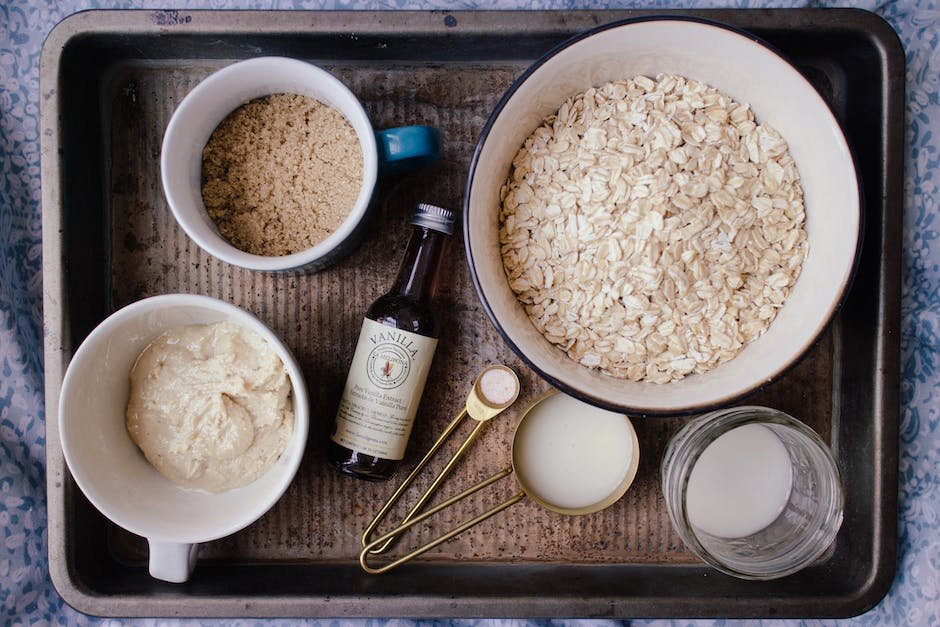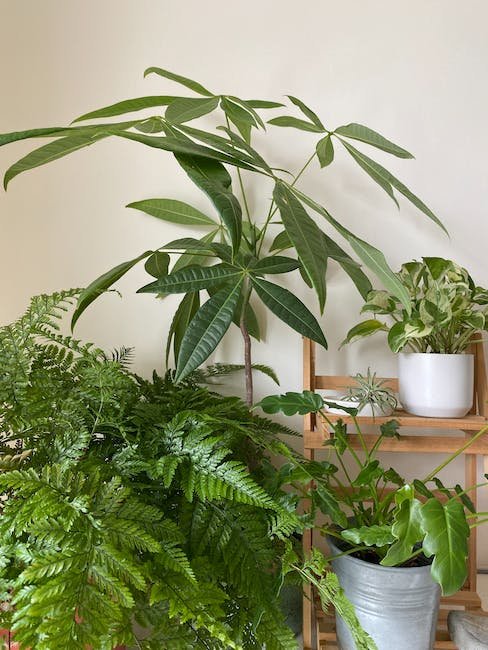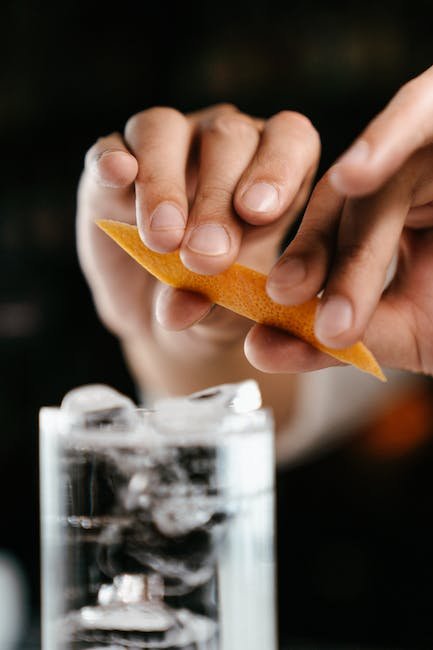Now Reading: How to Store Baking Ingredients for the Long Term
-
01
How to Store Baking Ingredients for the Long Term

How to Store Baking Ingredients for the Long Term
Baking, the alchemical symphony of flour, sugar, and a pinch of culinary magic, elevates our taste buds to celestial realms. But what happens when your cookie cravings can’t be satisfied at the local grocery store? Picture this: a magical pantry that holds not only the usual suspects, but also a treasure trove of perfectly preserved baking ingredients, just waiting to be unleashed. Whether you’re a seasoned pastry aficionado or a budding home baker, mastering the art of long-term ingredient storage is your secret gateway to dessert nirvana. So, gather your apron and prepare to embark on a voyage into the enchanted realm of proper pantry management, where flour and sugar reign supreme, and baked delights are forever within reach.
Table of Contents
- Storing Baking Ingredients: Maintaining Freshness and Quality
- Understanding the Shelf Life of Baking Ingredients
- Essential Tips for Properly Packaging and Labeling Baking Ingredients
- Choosing the Ideal Storage Containers for Long-Term Preservation
- Creating the Perfect Storage Space: Temperature, Humidity, and Light
- Q&A
- In Summary

Storing Baking Ingredients: Maintaining Freshness and Quality
One of the keys to successful baking lies in using fresh and high-quality ingredients. To ensure that your baked goods turn out perfectly every time, it is important to store your baking ingredients properly. By following a few simple tips, you can maintain the freshness, flavor, and quality of your ingredients, resulting in delicious treats that will impress your family and friends.
First and foremost, it is essential to keep your baking ingredients in airtight containers. This helps to prevent moisture and odors from seeping in, ensuring that your ingredients stay fresh for longer. Consider using glass or plastic containers with tight-fitting lids, or invest in reusable silicone bags for a more eco-friendly option.
When it comes to flour, it’s crucial to store it in a cool, dry place away from direct sunlight. You can also extend its shelf life by placing it in the refrigerator or freezer, especially if you live in a humid climate. For other dry ingredients such as sugar, salt, and baking powder, make sure to keep them in airtight containers in a cool, dark cupboard. This will help to prevent clumping, which can affect the accuracy of your measurements.
When storing liquid ingredients like oils and extracts, always check the manufacturer’s instructions. In most cases, these should be kept in their original containers with tight seals and stored in a cool, dark place. Avoid exposing them to heat, as this can cause them to break down and lose their flavor.
By following these storage tips, you can ensure that your baking ingredients remain fresh and of high quality. So, the next time you whip up a batch of cookies or bake a delicious cake, you can be confident that your ingredients will be in top-notch condition, resulting in delectable treats that will leave everyone craving for more.
Understanding the Shelf Life of Baking Ingredients
When it comes to baking, is crucial. Proper storage and usage of ingredients can make all the difference in the outcome of your baked goods. Here are some key points to keep in mind:
- Flour: Flour is a staple in baking, but it doesn’t last forever. To maximize its shelf life, store it in an airtight container in a cool, dry place. Whole wheat flour has a shorter shelf life compared to all-purpose flour due to its higher oil content. Check for any signs of rancidity or unpleasant smell before using.
- Sugar: Sugar is known for its long shelf life. Granulated sugar and brown sugar can be stored indefinitely if kept in a moisture-free container. However, if either sugar variety hardens, simply place a slice of bread or an apple wedge in the container to soften it.
- Leavening agents: Baking powder and baking soda are essential for achieving the right rise in your baked goods. Keep them in airtight containers to prevent moisture absorption. Baking powder typically has a shelf life of around 6 months to a year, while baking soda can last up to 2 years. Test their effectiveness by combining with a small amount of vinegar or hot water.
- Spices: Spices add flavor to your creations and should be stored properly. Ground spices generally last for about 1-3 years, while whole spices have a longer shelf life. Store them in airtight containers away from heat and sunlight to maintain their potency.
By understanding the shelf life of your baking ingredients and practicing proper storage techniques, you can ensure that your goodies turn out fresh and delicious every time. Remember to always check for any signs of spoilage before using any ingredients.

Essential Tips for Properly Packaging and Labeling Baking Ingredients
Proper packaging and labeling of baking ingredients are essential not only for maintaining their freshness but also for ensuring accurate measurement and safe usage. Here are some valuable tips to help you package and label your baking ingredients properly:
- Choose appropriate containers: Opt for airtight containers made of glass or food-grade plastic to keep your baking ingredients fresh and prevent them from absorbing unwanted odors. Clear containers allow easy visibility, enabling you to quickly identify ingredients.
- Seal and store appropriately: After filling your containers, ensure they are tightly sealed to prevent moisture or air from entering. Store ingredients in a cool, dry place, away from direct sunlight or heat, such as a pantry or cupboard.
- Label clearly and accurately: Use waterproof labels or permanent markers to indicate the name of the ingredient, date of purchase, and expiration date if applicable. You can also mention any specific storage requirements or allergy information to promote safety and convenience.
- Organize and group similar ingredients: Arrange your labeled containers by category, such as flours, sugars, or spices. This makes it easier to find what you need during baking, ensuring efficiency in your process.
By following these tips, you’ll not only prolong the shelf life of your baking ingredients but also simplify your baking preparations with quick and efficient access to all the necessary supplies. Happy baking!
Choosing the Ideal Storage Containers for Long-Term Preservation
When it comes to preserving your precious belongings for the long haul, selecting the right storage containers is key. It’s not just about finding a box that fits your items, but rather considering various factors that ensure their safety and longevity. Let’s dive into some essential tips to help you make an informed choice:
- Material: Opt for containers made from durable materials such as high-quality plastic or sturdy metal, which provide excellent protection against moisture and pests.
- Sealability: Look for containers with tight-fitting lids or seals to keep out dust, humidity, and unwanted critters. A proper seal prevents any damage caused by exposure to the elements.
- Size: Choose containers that are suitable for the specific items you’re preserving. Large ones allow for better organization, while smaller ones are perfect for delicate objects that require extra care.
- Stackability: To optimize space, opt for containers that can be safely stacked on top of each other without compromising their stability. This feature proves invaluable, especially when storing items in limited areas.
Remember, picking the ideal storage containers will give your belongings the protection they deserve, granting you peace of mind and preserving their quality for years to come.
Creating the Perfect Storage Space: Temperature, Humidity, and Light
Storage spaces play a crucial role in preserving the quality and longevity of our belongings. When it comes to creating the perfect storage space, three key factors come into play: temperature, humidity, and light. These factors can greatly affect the condition and lifespan of our stored items, whether it be delicate fabrics, valuable artworks, or even perishable food items.
Temperature control is essential in preventing damage caused by extreme heat or cold. Ideally, maintaining a constant temperature within the storage space is recommended. Extremes in temperature can lead to cracking, warping, or even mold growth. To ensure an optimal environment, consider using temperature-controlled storage units or installing climate control systems.
Humidity is another critical factor to consider. Excessive moisture in the air can lead to the growth of mold, mildew, and deterioration of materials such as paper, fabrics, and wood. On the other hand, low humidity levels can cause items to dry out and become brittle. Maintaining a moderate humidity level will help preserve the integrity of your stored items. Consider using dehumidifiers or humidity control devices to maintain the ideal conditions.
In addition to temperature and humidity control, protecting stored items from excessive light exposure is vital. Light, especially UV rays, can fade colors, degrade materials, and cause irreparable damage. Shielding items from direct sunlight and using UV-resistant covers or glass can significantly reduce the risk of light-induced deterioration.
By carefully managing temperature, humidity, and light levels in your storage space, you can create an optimal environment that helps to preserve the integrity and longevity of your valuable belongings. Remember, taking preventive measures today will ensure you can enjoy your cherished items for years to come.
Q&A
How can I store baking ingredients for the long term?
To store baking ingredients for the long term, ensure you keep them in airtight containers to prevent moisture or pests from getting in. Store them in a cool, dry place away from direct sunlight.
What are some common baking ingredients that can be stored for a long time?
Common baking ingredients with a long shelf life include flour, sugar, salt, baking powder, baking soda, and vanilla extract. These items can be stored for several months or even years if stored properly.
Can I store baking ingredients in the fridge or freezer?
Yes, certain baking ingredients can be stored in the fridge or freezer to extend their shelf life. For example, nuts, seeds, and whole grains can be stored in the freezer to prevent them from going rancid. However, be cautious with flour as it can absorb moisture in the fridge causing it to spoil.
Should I keep spices and flavorings in the pantry or fridge?
Most spices and flavorings are best stored in a cool, dark pantry. However, highly perishable flavorings like extracts or pastes can benefit from refrigeration to maintain their quality for a longer time. Always check the label for specific storage instructions.
How can I prevent clumping of ingredients during long-term storage?
To prevent clumping, you can add a small silica gel packet to the container of ingredients. This helps to absorb any excess moisture and maintain the quality of the ingredients. Alternatively, you can store ingredients in resealable bags and squeeze out as much air as possible before sealing.
Is it safe to use baking ingredients past their expiration date?
While most baking ingredients are still safe to use even after their expiration date, their quality and potency might have deteriorated. Perform a visual and smell test to ensure the ingredients haven’t gone bad. When in doubt, it is safer to replace them to achieve the best baking results.
In Summary
As we come to the end of our flour-dusted adventure in long-term ingredient storage, we bid adieu to our yeast friends and seal our final containers with satisfaction. The shelves now bear witness to a future of delectable creations, patiently waiting for the day we unleash them into the oven’s warmth.
In this whirlwind of biscuit tins and glass jars, we have learned the secrets of preserving the essence of our beloved baking ingredients. From their humble origins on the farm or in the mill, to their proud place in our bustling pantry, every ingredient we store harbors the promise of future culinary delights.
As we close this chapter, let us reflect on the valuable knowledge we have gained. We have discovered the importance of air-tight containers, those steadfast guardians of freshness. We have triumphed over the nefarious forces of moisture, learning to banish it to the darkest corners of our kitchens. And we have mastered the art of organization, creating a symphony of neatly labeled jars and bags that would make Marie Kondo herself proud.
But beyond these practical tips, we have unlocked something far greater. We have unraveled the secrets of time-travel through taste. With our pantry stocked and our ingredients preserved, we can traverse worlds with every bite. We can travel back to childhood memories, indulging in the nostalgia of warm cookies fresh from the oven. Or we can voyage to unknown lands, experimenting with exotic ingredients and flavors that spark our culinary curiosity.
So, as we say goodbye to these words of wisdom, let us not forget the power that lies within our hands. With the knowledge of long-term ingredient storage, we are the keepers of delightful surprises, the architects of mouth-watering wonders.
So, dear readers, go forth with confidence. Conquer those pantry pests, foil the schemes of stale ingredients, and boldly embark on your baking adventures armed with the secrets we have shared. May your journey be filled with triumphant recipes and endless joy.
Until we meet again, happy baking and happy storing!
As an affiliate, my content may feature links to products I personally use and recommend. By taking action, like subscribing or making a purchase, you’ll be supporting my work and fueling my taco cravings at the same time. Win-win, right?
Want to read more? Check out our Affiliate Disclosure page.





